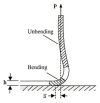Surface Characterization of Electro-Assisted Titanium Implants: A Multi-Technique Approach
- PMID: 32033256
- PMCID: PMC7040792
- DOI: 10.3390/ma13030705
Surface Characterization of Electro-Assisted Titanium Implants: A Multi-Technique Approach
Abstract
The understanding of chemical-physical, morphological, and mechanical properties of polymer coatings is a crucial preliminary step for further biological evaluation of the processes occurring on the coatings' surface. Several studies have demonstrated how surface properties play a key role in the interactions between biomolecules (e.g., proteins, cells, extracellular matrix, and biological fluids) and titanium, such as chemical composition (investigated by means of XPS, TOF-SIMS, and ATR-FTIR), morphology (SEM-EDX), roughness (AFM), thickness (Ellipsometry), wettability (CA), solution-surface interactions (QCM-D), and mechanical features (hardness, elastic modulus, adhesion, and fatigue strength). In this review, we report an overview of the main analytical and mechanical methods commonly used to characterize polymer-based coatings deposited on titanium implants by electro-assisted techniques. A description of the relevance and shortcomings of each technique is described, in order to provide suitable information for the design and characterization of advanced coatings or for the optimization of the existing ones.
Keywords: analytical characterization; mechanical tests; morphology; physico-chemical study; polymeric coatings; surface properties; titanium.
Conflict of interest statement
The authors declare no conflict of interest.
Figures









References
-
- Cometa S., Bonifacio M.A., Mattioli-Belmonte M., Sabbatini L., De Giglio E. Electrochemical strategies for titanium implant polymeric coatings: The why and how. Coatings. 2019;9:268–287. doi: 10.3390/coatings9040268. - DOI
-
- Kumar A.M., Adesina A.Y., Hussein M.A., Ramakrishna S., Al-Aqeeli N., Akhtar S., Saravanan S. PEDOT/FHA nanocomposite coatings on newly developed Ti-Nb-Zr implants: Biocompatibility and surface protection against corrosion and bacterial infections. Mater. Sci. Eng. C. 2019;98:482–495. doi: 10.1016/j.msec.2019.01.012. - DOI - PubMed
-
- Gil F.J., Rodriguez A., Espinar E., Llamas J.M., Padullés E., Juàrez A. Effect of oral behavior of Titanium Dental Implants. Int. J. Oral Maxillofac. Implants. 2012;27:64–68. - PubMed
Publication types
LinkOut - more resources
Full Text Sources
Miscellaneous

